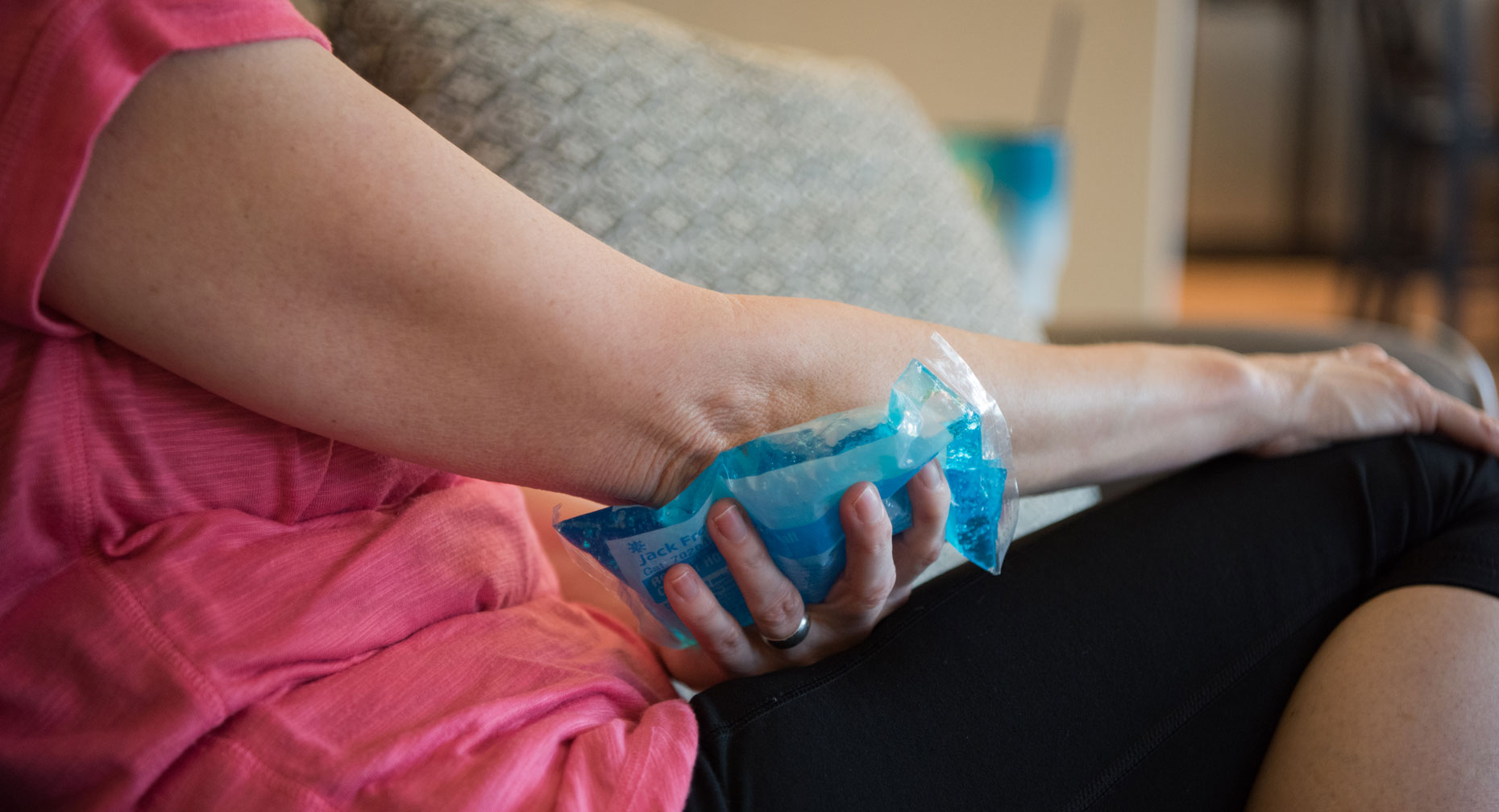- Bone and Joint Health
- Fitness and Exercise
- Health Topics
- Injury/Illness
- Joint Conditions/Injuries/Treatment
- Knee Injury
- Osteoarthritis
- Shoulder
- Sports
Tennis Elbow – And Other Tendon Troubles

Answer a few questions and we'll provide you with a list of primary care providers that best fit your needs.
Oh, my aching _____! Fill in the blank with whichever spot is bugging you: elbow, shoulder, knee, heel, or lower leg. That joint pain and soreness may be tendinitis.
Any medical condition that ends in “-itis” tells you there’s inflammation. So, tendinitis is inflammation of a tendon, a thick cord of flexible, fibrous tissue that connects muscle to bone.
The causes of tendinitis aren’t exactly known. Aging or disease (diabetes, rheumatoid, or infection) are possibilities. But tendinitis usually occurs after strain, overuse, injury, or too much exercise.
Where You’ll Find Tendinitis
Tendinitis most frequently occurs in the:
- Elbow. “Tennis elbow” or “golfer’s elbow” refers to pain that runs along the back of your elbow and forearm, or from the tendon that runs from elbow to hand on the palm side.
- Shoulder. Rotator cuff tendinitis, also known as swimmer’s shoulder or pitcher’s shoulder, occurs in the shoulder capsule and can make arm and shoulder movement painful.
- Knee. Patellar tendinitis, sometimes called jumper’s knee, is an injury to the tendon that connects your kneecap (patella) to your shinbone.
- Heel and lower leg. The Achilles tendon connects calf muscles at the back of the lower leg to the heel bone. Achilles tendinitis is an overuse injury of that tendon.
“Tennis elbow is the tendinitis we see the most often and, no, you don’t have to play tennis to experience it,” says Scott Albright, MD, of Premier Orthopedics. “Repetitive gripping activities, especially using your thumb and first two fingers, can bring on tendinitis.”
Tendinitis usually occurs after strain, overuse, injury or too much exercise.
Diagnosing and Treating Tendinitis
In addition to a history and physical exam, your healthcare provider may take an X-ray or use a needle to remove a small amount of tendon fluid to test for infection or other disease.

“Tendinitis often gets better with anti-inflammatory medications. Putting ice on a recent injury helps, as does resting or elevating the affected area,” says Dr. Albright. “Stretching exercises may help, as do splints or braces in some cases.”
Other treatments may include:
- Ultrasound, which are gentle sound-wave vibrations that warm deep tissues and improve blood flow
- An electrical current that pushes a corticosteroid drug through the skin directly over the swollen bursa or tendon
- Gentle stretching and strengthening exercises
- Massage of the soft tissue.
If there’s no improvement, your doctor may inject a drug into the area around the tendon. If your joint doesn’t improve in 6-12 months, the doctor may perform surgery to repair damage.
Answer a few questions and we'll provide you with a list of primary care providers that best fit your needs.
Source: Medlineplus; NIH; Scott Albright, MD, Premier Orthopedics





